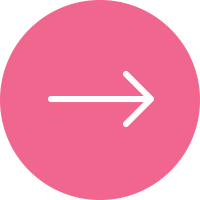
Unit 1: Math and Measurement
What is Chemistry?
Measurements:
Science is done all around the world! Because of this, scientists need to use the same units when making measurements so they can compare data. Science uses the International System of Units because most are set up in units of ten and are easily converted.
Here is a link to a video I made explaining the metric system and performing metric conversions. Anytime you see a big yellow button; it links you to a video I made about the topic. The video code is always Mercer (with a capital M).
Some scientific measurements are extremely large or tiny; in order to write these numbers easily we use scientific notation. Note: scientific notation does NOT change the number, just the way it is written.

Countries such as the United States, Liberia, and Berma have not officially adopted SI units (the metric system) as their primary system of measurements. Since MOST of the world uses SI units, scientific and mathematical fields will use SI units in order to provide ease when sharing data.

significant figures:

All measurements are approximations—no measuring device can give perfect measurements without some level of uncertainty. When making measurements, the number you record is only as accurate as the device being used. To show the accuracy of a number, scientists use significant figures.
Here is an online tutorial to help walk you through the rules/mathematics behind significant figures. This is a great website to help review and there is a worksheet at the end to check for understanding. NOTE: The website may lead you straight to the final review worksheet. Look on the left-hand side to click on the first topic to get the notes and full review if needed.
If you're really struggling with significant figures, here is a YouTube video which breaks sig.fig's down to extremely simplistic terms. There are several different video's (1-9), so feel free to skip around to find the video's which focus on the area's you may be struggling with.
If you would like more practice rounding significant figures, here is an online review worksheet.

Density =
Mass
Volume
Mass= the amount of matter in an object; unit = g
Volume= the amount of space an object occupies
1.) regular object= can easily measure length
l x w x h unit = cm
2.) irregular object = awkward shape; cannot measure length easily so we must use water displacement
Vi= initial volume (without object)
Vf = final volume (with object)
Volume of object= Vf-Vi unit =mL

3
the value calculated from an actual experiment; the number you calculate
the known value; theoretically in a perfect world and experiment this is the number you should have gotten; the number I give you
% error =
Experimental - theoretical
theoretical
x 100
Classifying Matter:

Here is a website I found which briefly explains how we classify matter. After reading the short review, you can go through an interactive worksheet which has you practice classifying matter. If you get a question wrong, it does a great job helping explain why and guides you towards the correct answer.

This webpage is a great review of chemical changes and properties vs physical changes and properties (it is on the same website as the link above). After reading the brief review there is an interactive worksheet to test your understanding.
Review:
Click to go back
to top
Unit 1 Homework
Thursday: more DENSITY practice
Wednesday: Complete FRONT (1-4) of density worksheet AND finish your metric olympics lab
Tuesday: Study for the elements quiz and start working on the Metrics Olympics lab (due Thursday at the beginning of class)!
Monday: Rounding Sig.Figs with math (1-13 on front of notes wkst)
Here is a video to help:
Last Week
Friday: Scientific notation notes AND counting significant figures; Study for quiz MONDAY
Scientific Notation: take notes while you watch this video (code is Mercer...capital M)
Counting Sig. Figs: take notes THEN watch this quick video (code is Mercer...capital M)
Thursday: 1-10 metric conversions half sheet; Question 1 should say = 12.5!! If it says 30, you're on the WRONG SIDE
Start at 5:30 for help with the homework; code = Mercer (capital M)
Tuesday:Study for the safety quiz; read over safety rules and measuring devices


